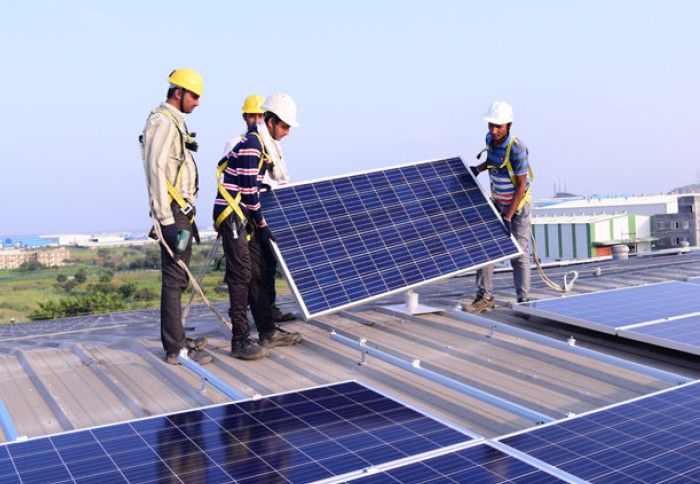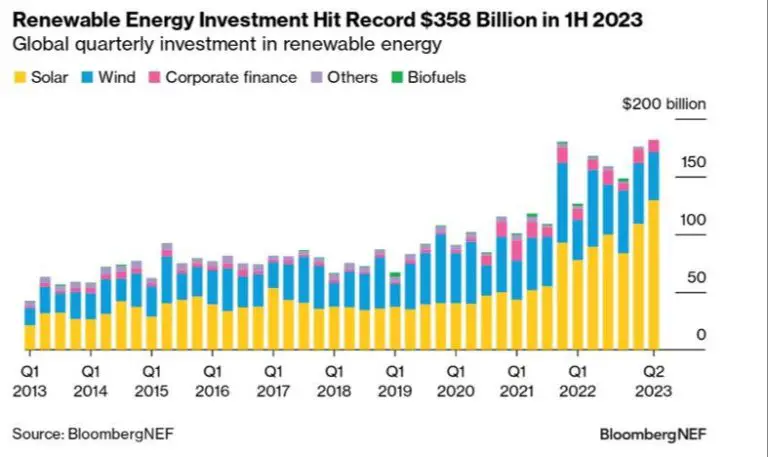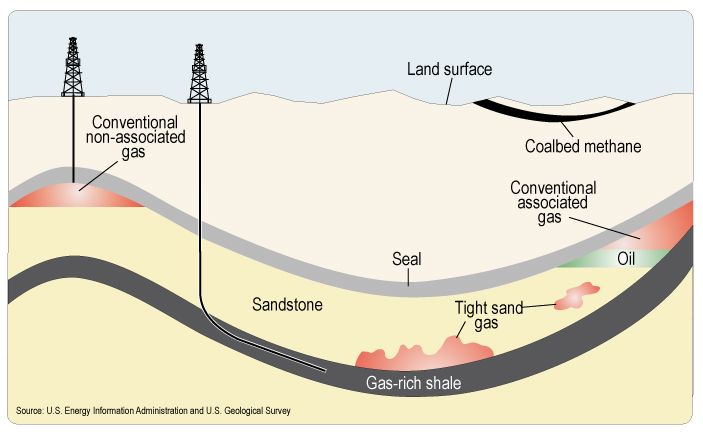What Energy Source Is The Best Alternative To Fossil Fuels?
Fossil fuels like coal, oil and natural gas have powered the world for over a century. However, burning fossil fuels produces greenhouse gas emissions that contribute to climate change. Fossil fuel reserves are also finite and will eventually run out. These factors have created an urgent need to transition to alternative energy sources that are renewable and sustainable.
Alternative energy refers to energy derived from sources other than fossil fuels. Some common alternative energy sources include solar, wind, hydroelectric, geothermal, biofuels and nuclear power. Alternative energy can provide power with reduced greenhouse gas emissions and without the risk of fuel supply disruptions.
Given the drawbacks of fossil fuels, the question is: What energy source is the best alternative to displace fossil fuels? The ideal alternative energy solution should be affordable, reliable, scalable, sustainable and have minimal environmental impacts. This article will compare the different alternative energy options and evaluate their merits and drawbacks.
Solar

Solar power harnesses energy from the sun and converts it into electricity. This is done through the use of photovoltaic cells, which are made up of semiconducting materials that absorb photons from sunlight and release electrons. The flow of these photons generates an electric current that can then be used to power electrical grids, homes, and businesses.
Solar is one of the fastest growing renewable energy sources worldwide. In 2021, global solar generation capacity increased 23% to over 1,000 gigawatts. Costs for solar have declined dramatically in the past decade making it competitive with fossil fuels in many markets. The levelized cost for utility-scale solar dropped from around $0.378 per kWh in 2010 to $0.037 per kWh in 2021.
The advantages of solar include its abundance, renewability, and declining costs. Solar also has environmental benefits as it produces no air or water pollution during operation. The disadvantages include its intermittent generation, large land requirements, and high upfront costs. Challenges for wide-scale solar adoption include improving energy storage to deal with intermittency and building out transmission infrastructure to bring solar electricity from optimal sunny regions to demand centers.
Wind Energy
Wind power harnesses the wind to generate electricity using large wind turbines. Modern wind turbines consist of a tower, generator, gearbox, blades, and control systems. The kinetic energy from the wind rotates the blades, which spins a shaft connected to a generator to produce electricity.
Wind power capacity and the number of wind farms have grown rapidly in recent years. According to the U.S. Energy Information Administration, wind energy generation in the United States more than doubled between 2010 to 2020 as more wind turbines and wind farms were built to meet renewable energy targets. The American Wind Energy Association estimates over 60,000 wind turbines operating across 41 states and two U.S. territories.
The advantages of wind power include no fuel costs, low operating costs, and no direct emissions. Wind farms can also provide local jobs and lease income to rural communities. However, wind power can be intermittent since it relies on wind patterns. Wind turbines also require large land areas and can raise environmental concerns regarding wildlife impacts. The costs to build and transmit wind power from optimal wind farm locations to cities can also be high.
Hydroelectric
Hydroelectric power comes from capturing the energy of moving water and converting it into electricity. Modern hydroelectric dams use turbines that are activated by flowing water, which then spin generators to produce power. Typically, dams are constructed on rivers to create large reservoirs, allowing for control of water flow through the turbines.
Globally, hydroelectric power accounts for around 16% of electricity generation. The countries with the highest hydroelectric capacity are China, Brazil, Canada, the United States, and Russia. However, there is still untapped potential in some regions like Africa, Asia, and Latin America.
The advantages of hydroelectric power include its renewable nature, low operating costs, and lack of direct emissions. It’s also relatively reliable and can quickly adjust output to meet shifts in demand. However, there are also some downsides. Large dams flood land and disrupt ecosystems, and reservoirs emit greenhouse gases. Dams also block fish migration routes and can impact water quality. And droughts can reduce output from hydroelectric plants.
Hydroelectric is also limited by geography, as it requires flowing water and appropriate terrain to facilitate dam construction. This means hydroelectric potential is highest in mountainous regions and along large rivers. Overall, hydroelectric power is a mature renewable technology that provides affordable, low-emission electricity generation in suitable locations.
Geothermal
Geothermal energy utilizes the natural heat from the earth’s core to generate electricity and provide heating and cooling. It is harnessed by tapping into underground reservoirs of steam, hot water or hot rocks and bringing that heated fluid to the surface to produce energy. There are three main types of geothermal power plants:
Dry steam plants use steam from geothermal reservoirs to directly drive turbine generators. The first geothermal power plant was opened at Larderello in Italy in 1904 and operates on dry steam.
Flash plants take high-pressure hot water from deep inside the earth and convert it to steam to drive the turbines when it reaches lower pressure at the surface. Flash plants are the most common type of geothermal power plant in operation today.
Binary cycle plants transfer the heat from geothermal hot water to another liquid, usually an organic compound with a low boiling point. The secondary liquid flashes to vapor which drives the turbines. Binary cycle plants emit very few greenhouse gases.
Geothermal energy can provide base load electricity generation as well as direct heating and cooling. It has a capacity factor of 90-95%, compared to around 30% for wind and solar. Key geothermal use cases include:
– Generating electricity for utilities
– District heating of buildings, greenhouses and aquaculture ponds
– Heating and cooling of individual buildings through ground source heat pumps
Geothermal power costs around $0.05 per kWh on average. Drilling accounts for over half the costs, so a deep well of 1-2 miles can cost several million dollars. However, geothermal plants have very low operating costs compared to fossil fuels. The major limitations are that geothermal reservoirs are site-specific, and can take many years to develop. Scaling up globally would require advanced technologies like enhanced geothermal systems.
Biofuels
Biofuels are fuels made from biomass, or plant and animal material. The main types of biofuels include:
- Bioethanol – Made from fermenting sugars from crops like corn and sugarcane.
- Biodiesel – Made from vegetable oils, animal fats, or recycled grease.
- Biogas – Made from decomposing organic matter like crop residues and manure.
Biofuels are produced through various processes like fermentation, transesterification, anaerobic digestion, and Fischer-Tropsch synthesis. These processes convert biomass feedstocks into liquid or gas fuels.
Compared to fossil fuels, biofuels can reduce greenhouse gas emissions because the plants they are made from absorb CO2 as they grow. Biofuels are renewable as long as biomass is replanted at the same rate it is used. However, some biofuels compete for land and resources needed for food production. Most biofuels also require large amounts of land, water, and energy to produce, which limits their scalability. While biofuels can replace fossil fuels in some applications like transportation, fully transitioning to biofuels is likely not feasible due to constraints on sustainable production.
Nuclear
Nuclear power plants use nuclear fission to generate electricity. Uranium atoms are split apart in a controlled chain reaction, releasing a large amount of heat energy. This heat is used to boil water into steam that spins turbines to generate electricity. Nuclear fission produces far more energy from far less fuel compared to fossil fuel power plants.
Around 10% of the world’s electricity is generated by about 440 nuclear power reactors. The countries most reliant on nuclear power include France, Slovakia, Ukraine, Hungary, and the USA. However, some countries like Germany are phasing out nuclear power in favor of renewable energy sources.
The big concerns with nuclear power are radioactive waste disposal and safety. Nuclear waste can remain dangerous for thousands of years. Most nuclear waste is stored on-site at power plants. Long term disposal options like underground storage are still being researched. Nuclear power plant accidents like Chernobyl and Fukushima have caused major environmental and health damage. However, technologies and safety regulations have improved significantly over the decades.
Nuclear power is relatively expensive, requiring very high upfront capital costs for construction. Operating costs are low since the fuel uranium is cheap, but there are considerable costs involved in plant maintenance, waste management, and meeting stringent safety regulations. Government subsidies and financing is often needed for new nuclear power projects.
Hydrogen
Hydrogen fuel cells convert hydrogen and oxygen into water to produce electricity. The only byproduct is water, so hydrogen power does not generate any air pollution or carbon emissions. Fuel cells can provide power for vehicles, buildings, and electronic devices.
Currently, hydrogen is used to power fuel cell vehicles, like city buses and personal cars. It also provides backup and off-grid power for buildings, telecom towers, warehouses, and data centers. Some electronics like laptops and cellphones can be powered by hydrogen fuel cells.
The biggest challenge facing hydrogen power is producing it in a clean, sustainable way. Most hydrogen today comes from natural gas, which emits carbon. The other challenge is building out the infrastructure to distribute hydrogen fuel across the country. Transporting and storing hydrogen requires high pressure or extremely low temperatures. Overall, hydrogen shows promise as a green fuel source, but production and distribution obstacles remain.
Comparative Assessment
When evaluating the various alternative energy sources as a replacement for fossil fuels, several key factors should be considered including costs, scalability, environmental impact, and long-term viability.
Solar and wind energy are very cost competitive and scalable, with levelized costs steadily declining. However, their intermittent output can be a challenge for grid stability without storage solutions. Biofuels may have high emissions depending on feedstocks and land use change impacts. Geothermal and hydroelectric are location constrained but provide reliable baseload power.
Nuclear power has reliable output capacity and low emissions, but faces very high startup costs and public opposition. Hydrogen can be produced from renewable electricity but requires new infrastructure for storage and transportation. Overall costs per kWh for solar, wind, geothermal and hydroelectric are now at or below fossil fuels in many markets.
Experts broadly agree that a mix of renewables, storage, grid flexibility, and energy efficiency will be needed to fully transition off fossil fuels. Solar and wind are expected to provide the bulk of generation, with other sources playing supporting roles in hard-to-decarbonize sectors. Policy support remains crucial to accelerate adoption and build out at the pace and scale required.
Conclusion
In summary, some of the top renewable energy alternatives to fossil fuels discussed were solar, wind, hydroelectric and nuclear power. While each has advantages and disadvantages, solar and wind energy emerge as two of the most promising options. Solar energy is abundant, produces no direct emissions, and solar technology costs continue to fall dramatically. Wind power is also widely available, increasingly affordable, and deployed at large scales around the world.
However, the variability and intermittency of solar and wind present challenges for relying completely on these sources. The best path forward is likely utilizing a diverse combination of renewables including solar, wind, hydroelectric and geothermal based on availability by region. Nuclear should also remain part of the mix for its carbon-free baseload power capacity. Continued research, development and investment will be needed to advance energy storage solutions to better accommodate higher levels of solar and wind penetration. With the right combination of renewable sources, supportive policies, and technological innovation, a clean energy transition away from fossil fuels is within reach.




